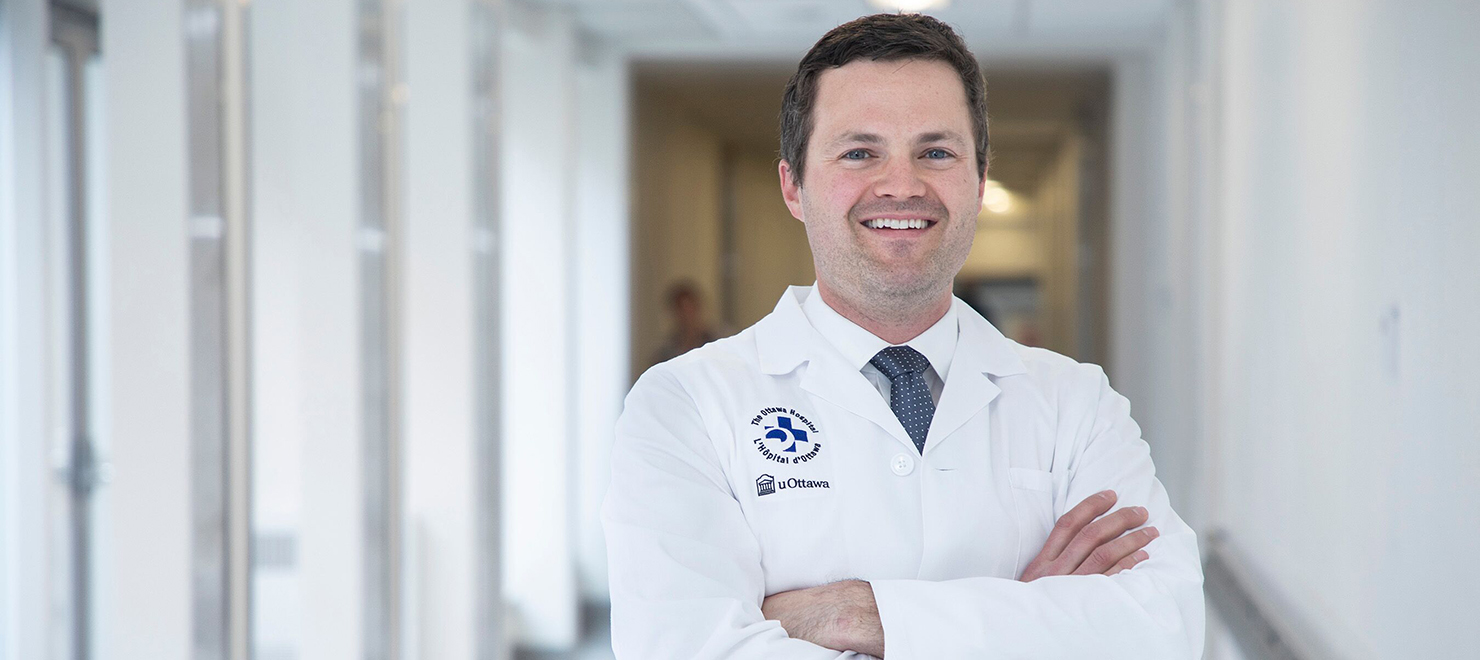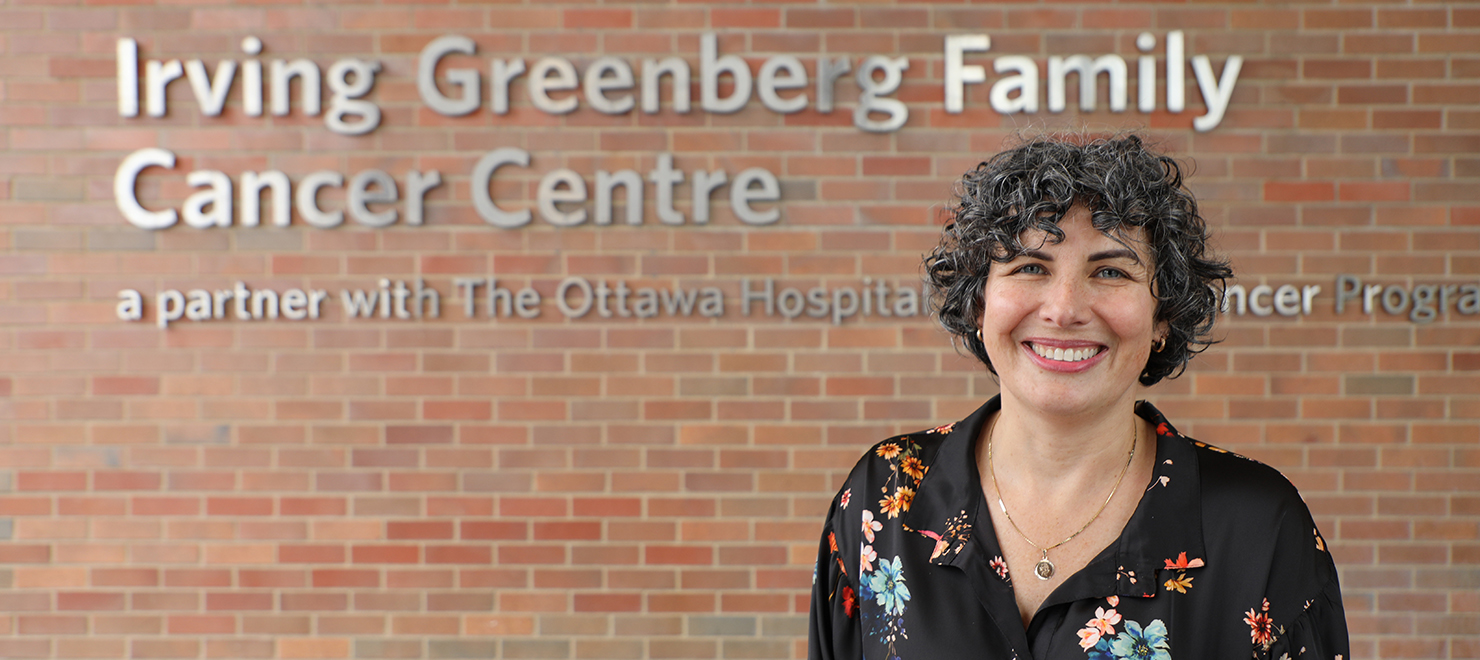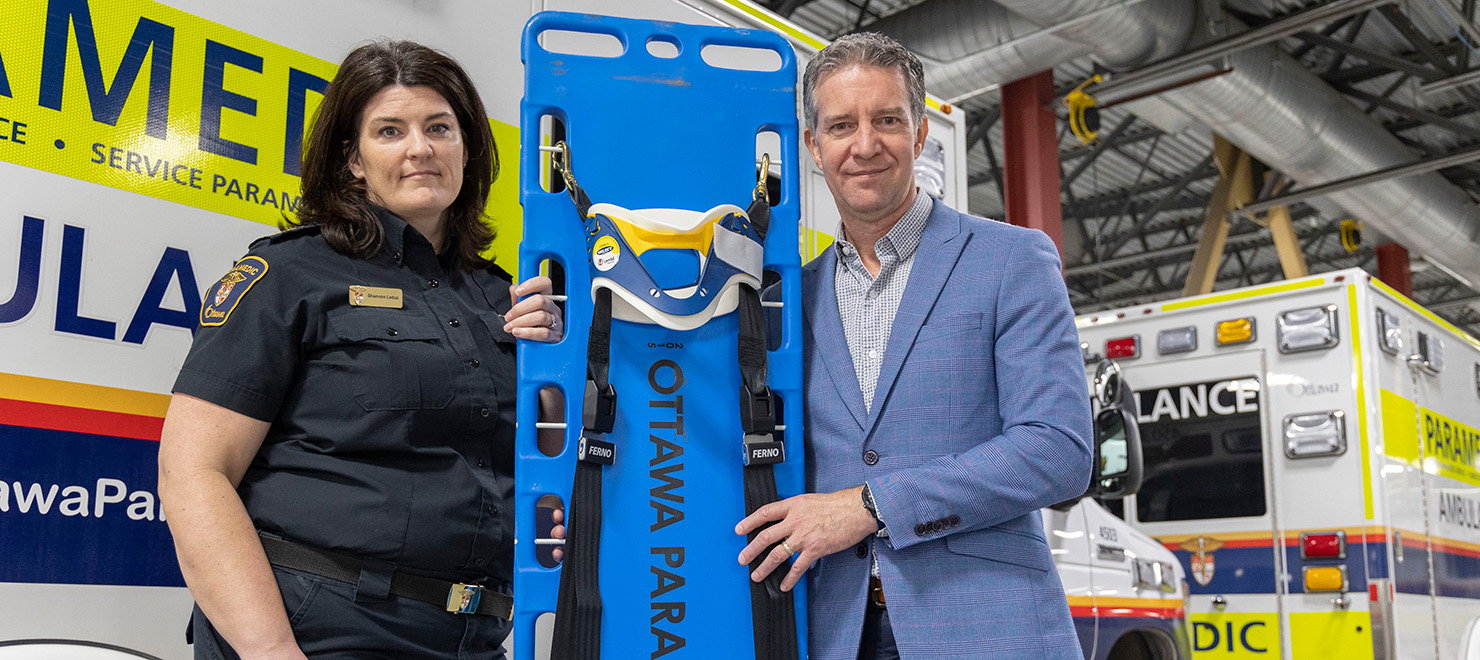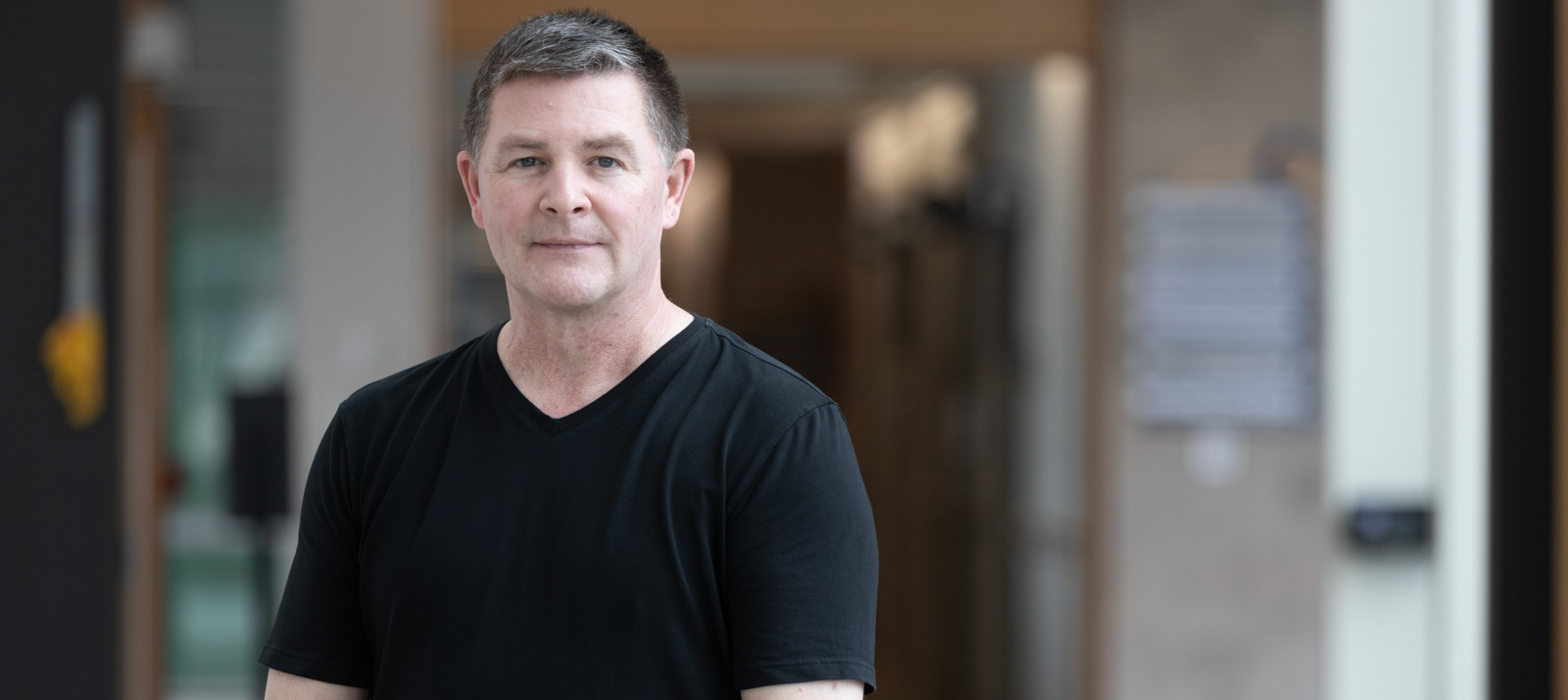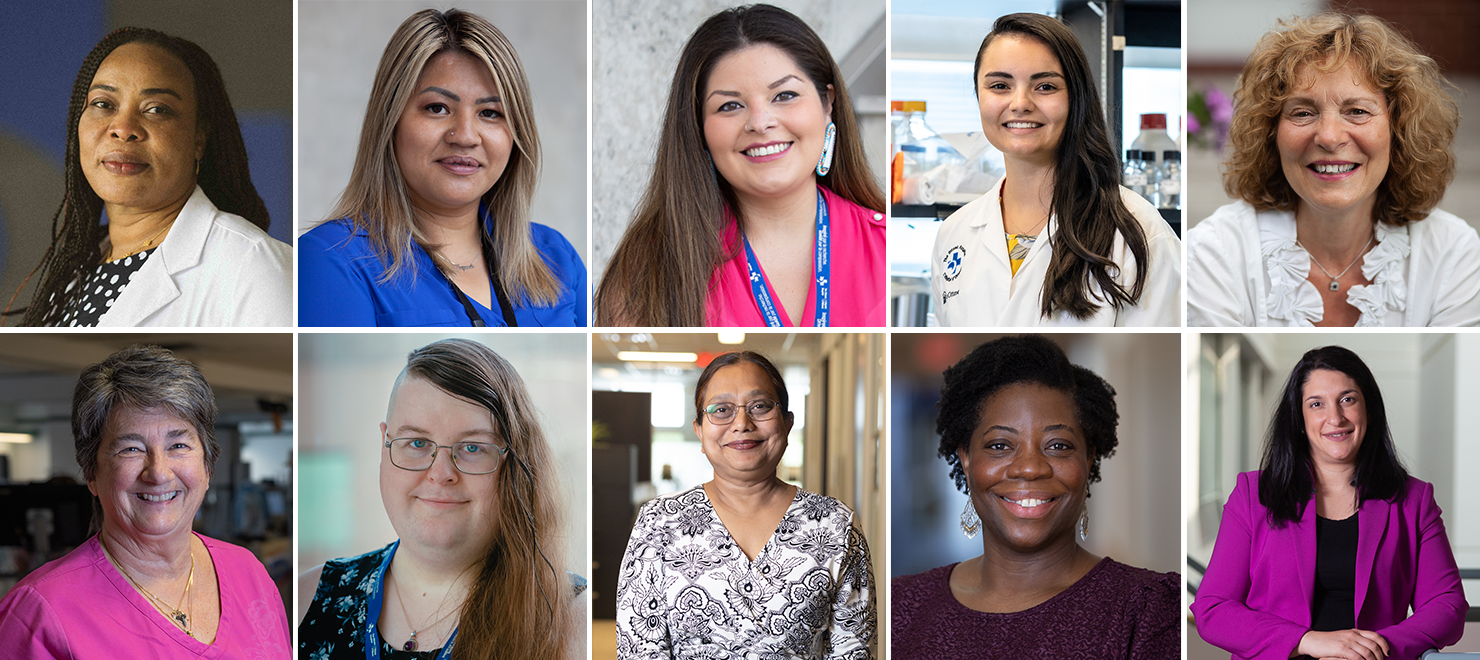
AIDS. It’s a loaded word for many people in Canada, especially gay men. In the 1980s, hearing a doctor say “you have AIDS” immediately inspired fear, and most often led to a rapid health decline characterized by suffering, grief, and ultimately, death.
Thankfully, a lot of progress in HIV treatment has been made in the past four decades.
As Dr. Paul MacPherson, an Infectious disease specialist and scientist in the Clinical Epidemiology Program at The Ottawa Hospital put it, “The treatment of HIV has improved so remarkably that we’ve shifted from acute treatment of an illness that led to death, to living alongside people, managing their health, and now looking very much at HIV prevention.”
In honour of World AIDS day, we take a look back at how The Ottawa Hospital played a major role in caring for patients with HIV, how it continues to lead life-saving research, and how it is transforming how HIV is managed today.
The waves of HIV
Dr. Bill Cameron, an infectious disease specialist, senior scientist in the Clinical Epidemiology Program and Medical Director of Clinical Research at The Ottawa Hospital explains that the progression of HIV infection can be loosely organized into three waves:
First wave: A silent epidemic that preceded the recognition of AIDS by a decade. It was rumbling away in the background. Sporadic cases were not recognized as clustered or special. It was only when the virus was seen to appear in clusters that it was recognized as AIDS.
Second wave: The initial outbreak of HIV and AIDS was recognized only as an epidemic of disease and death. It was mysterious and clearly transmissible, and it was stigmatized from the outset because the people who were dying of AIDS as a new disease entity were new immigrants, injection drug users, people with hemophilia, and gay men. People in those populations suffered stigmatization from the outset.
Third wave: After the avalanche of disease and death, there was another epidemic of social, political, economic and other blowback, and it changed a great number of things. Everything from drug development to drug regulation changed under its influence. The stigma is still with us today, but it is improving for many.
Opening our doors to people with AIDS
The General Hospital (as it was then known) played an important role in the early days of the second wave. Hospital administration said they would welcome people with AIDS (HIV was not recognized at the time) and said they would establish a regional comprehensive care multi-disciplinary clinic to manage the health and disease of people living with AIDS.
“We’ve changed from dying with AIDS to living with HIV.”
“That was a remarkable step,” recalled Dr. Cameron. “I put it down to the culture of the Grey Nuns, who founded the hospital and were on a mission from God to serve the poor, the downtrodden, and the people in greatest need, and they did so very well.”
The Immunodeficiency Clinic at The Ottawa Hospital
The hospital established the Immunodeficiency Clinic in 1987, staffed by infectious disease experts, and allied health professionals like pharmacists, social workers, psychologists and others, all of whom were ready to care for people who were sick and expected to die.
“There was a strong sense of palliation and storytelling in the clinic at the time, said Dr. Cameron. “The work being done was as much in the social and human domain as it was in the medical domain. The medical work was focused on helping people live longer, healthier lives and we did so even in the 1980s.”
The hospital became an early adopter of HIV treatments, participated in large clinical trials that brought new treatments to the marketplace, and conducted observational studies and pharmacokinetic studies (studies on how drugs are metabolized in the body), which helped to grow the global understanding of HIV.
Stuart’s story
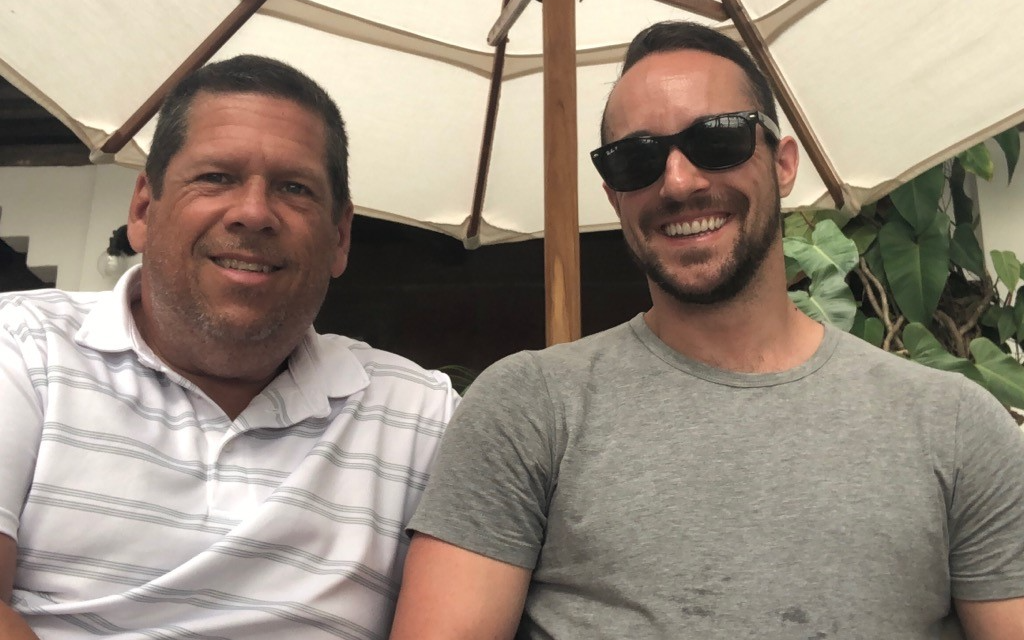
Stuart Macmillan, 54, was first diagnosed with HIV on October 31, 1995. Ten years later, the avid runner and tennis player was referred him to The General Hospital after a medical complication. Like many patients who were HIV positive at the time, Stuart had to take 22 pills every day to manage his condition.
“To me, the medication was a daily reminder that I was sick,” he said. “With that many to take, your head is saying ‘those aren’t vitamins. You’ve got a serious issue, and you need to take these pills to stay alive’”
But thanks to world-class research at The Ottawa Hospital, Stuart didn’t have to live with those thoughts for long.
A homerun for HIV treatment
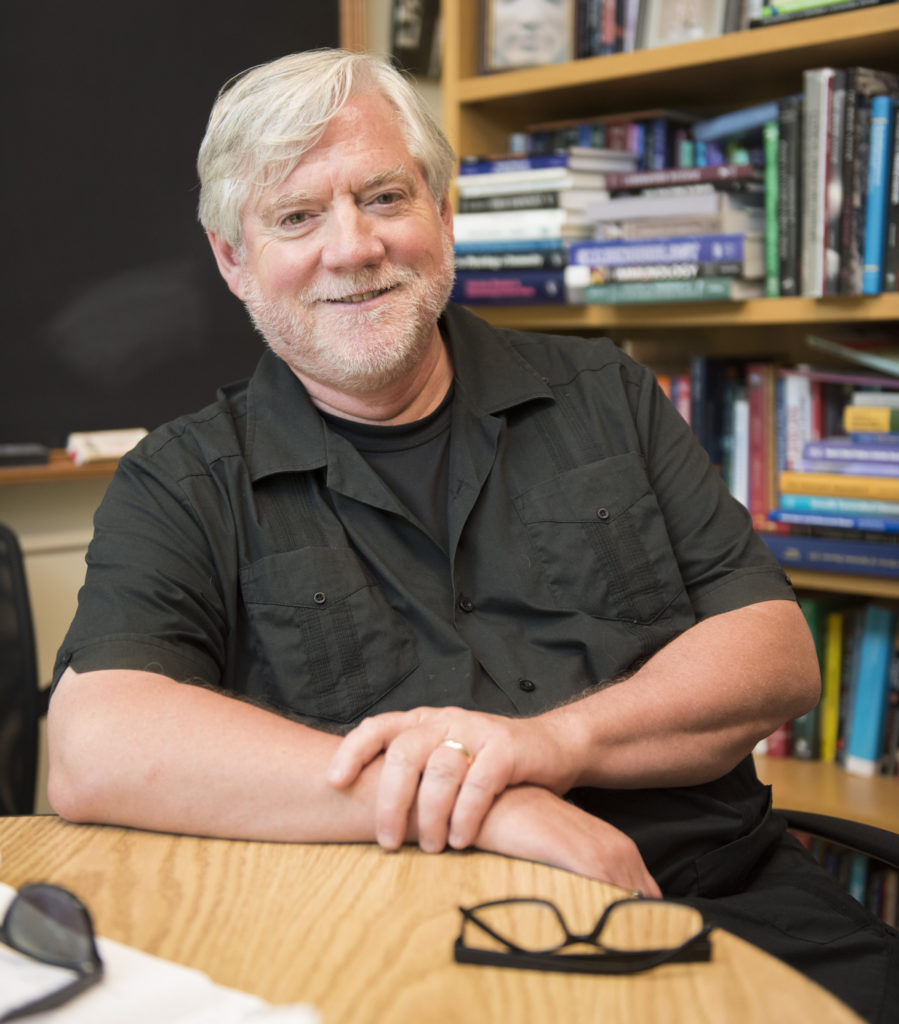
The hospital had been at the forefront of the treatment of HIV for more than a decade when, in 1995, our researchers contributed to a global breakthrough.
Dr. Cameron described it this way: “We hit a homerun in terms of introducing life-saving protease inhibitor treatments and the first long-lasting, effective protease inhibitor combination of treatments for HIV. It turned things around tremendously.”
“Those studies really changed the whole landscape of HIV treatment,” agreed Dr. MacPherson. “It was a really formidable time.”
Innovation continued, and in 1996, The General Hospital was one of the first centres in the world to have this treatment.
The successes of 1995 and 1996 led to a rapid advancements. Medications were combined into single pills, decreasing the total number of pills patients had to take every day.
“In the early years of my diagnosis, I was counting down. Now I’m counting up.”
As medication improved, Stuart was one of the patients who transitioned down gradually from a 22-pill cocktail to just one pill per day.
“When you take one a day, then it’s almost like I’m taking my vitamins,” said Stuart. “For me, it’s just like taking a nighttime pill. I don’t think of it as what’s keeping me alive, although I know it is. It’s a huge shift in my mentality.”
With HIV more easily controlled with fewer medical interventions, the focus of the Immunodeficiency Clinic transformed from largely comfort care for dying patients to one where patients walked in, received their medication, and went on with their lives.
A shift in thinking about HIV treatment
Perhaps the progress made can be summed up in one sentence: we’ve changed from dying with AIDS to living with HIV.
Stuart and thousands of people like him, are certainly proving it right.
After working in telecommunications for 22 years, inspired by his mother, Stuart went back to school to become a personal support worker. He worked on the 7th floor at the General Campus of The Ottawa Hospital before he switched to becoming an attendant in the operating room. He and his husband, Sébastien LeBel, have been together for five years and married for three.
HIV is now a small part of Stuart’s full life. As Dr. MacPherson put it, “We’ve moved from looking at our patients as people with HIV and AIDS to people with health issues, a part of which might be HIV.”
And Dr. MacPherson is at the forefront of this kind of work.
“It’s not just that some gay men now live with HIV and can now live healthy lives,” he continued. “We look at them more holistically in terms of their health care. It’s a beautiful evolution from ‘you’re going to die in the next couple of years’ to ‘you’re going to live a fulfilling life.’
Stuart agrees. “In the early years of my diagnosis, I was counting down. Now I’m counting up. I’m doing things in my life now that I would never have considered doing even 20 years ago because of my condition.”
The evolution (and the research) continues
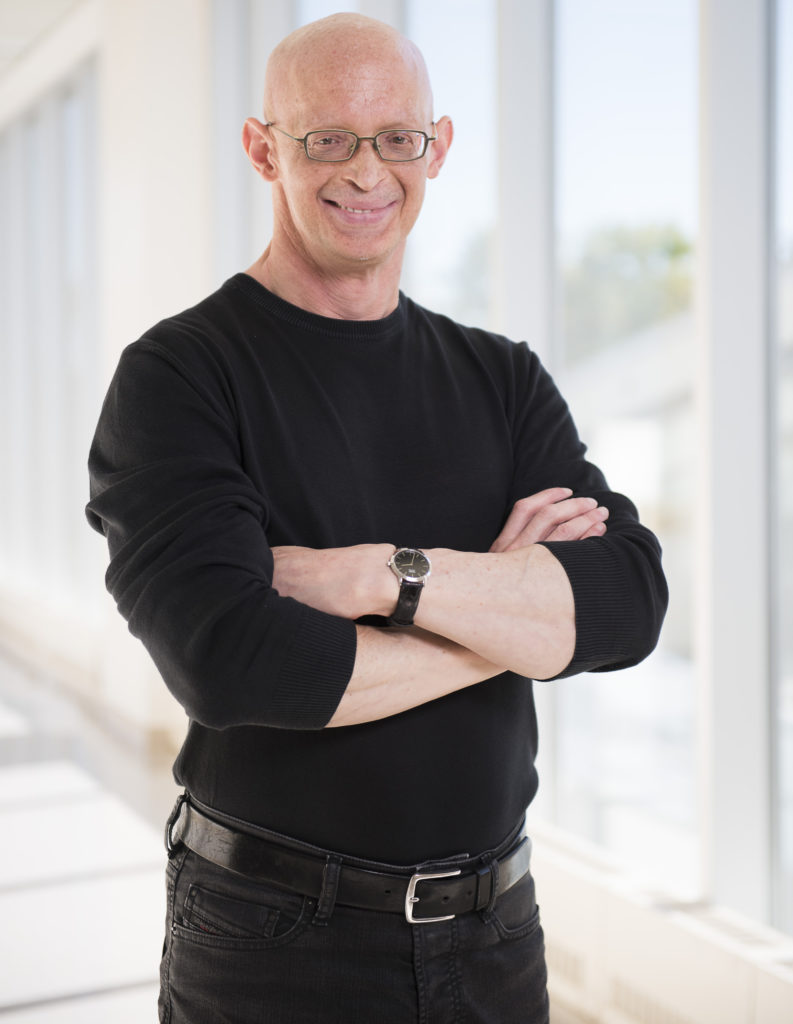
The evolution continues. And the momentum behind the evolution is, in part, thanks to consistently contributing to the research as advancements were made.
“It’s not like one fundamental thing was done in the 1990s,” said Dr. MacPherson. “There has been continuous, progressive research brought to bear in what has been an inspiring change in health care.”
New research has led to HIV pre-exposure prophylaxis which has the potential to eliminate HIV transmission.
And researchers around the world including Dr. Jonathan Angel at The Ottawa Hospital are searching for ways to eliminate HIV from the body and bring about a cure. Thanks to generous support from the community, Dr. Cameron, Dr. MacPherson and others can continue pursuing their important work.
The research, and the work done at The Ottawa Hospital has meant the world to Stuart. He recently posted an important milestone on his Facebook page: a red ribbon with the number 25 on it.
“I am still alive after 25 years,” he said. “Originally they had given me approximately eight years. So to me, I am proud of this 25-year mark.”
Resources
- HIV research at The Ottawa Hospital
- HUGO (Health Unlimited for Guys in Ontario)
- CAITE (Canada’s source for HIV and Hepatitis C information)
- Ontario HIV Treatment Network
The Ottawa Hospital is a leading academic health, research and learning hospital proudly affiliated with the University of Ottawa.

Support patient care and research at
The Ottawa Hospital
You might also like…
Do you have a surgery coming up? Here are five “prehab” tips to help you recover faster
You’ve probably heard about rehabilitation, but what about “prehabilitation”? Prehab is all about getting your body and mind in top shape before surgery so you can enjoy a smoother, quicker recovery. Discover five essential prehab strategies from researcher Dr. Daniel McIsaac.
By thinking differently, this research team is improving the lives of people with cancer
Taking a different approach to clinical trials, the REthinking Clinical Trials (REaCT) program aims to answer some of the most important and practical questions that affect both patients with cancer and our health-care system. Find out what sets REaCT apart and makes the program so special to participants like Beth.
Does this backboard look comfortable to you?
Imagine this: You’re flat on your back, strapped tight to a rigid backboard, unable to move at all. Fortunately, this is no longer the reality for most low-risk trauma patients when they’re brought to hospital in our province. Find out how researchers at The Ottawa Hospital teamed up with paramedics across Ontario to make the journey a lot more comfortable.
Ever have a tough time making a medical decision? These tools can help you
When faced with a medical condition, there may not be one clear path forward — but we have something to help you with that. The Ottawa Hospital is home to the largest collection of decision aids in the world, covering everything from various cancers to depression to allergies.
After a traumatic brain injury, this physician is on a mission to improve inclusion of docs with disabilities
Motivated by his own experience, Dr. Michael Quon has helped create a new accessibility and accommodation policy for physicians with disabilities in The Ottawa Hospital’s Department of Medicine.
A special video message for International Women’s Day
Every year on March 8, we recognize International Women’s Day to celebrate how far we have come with equal rights and opportunities for women, and to acknowledge how far we still have left to go. This video is a short-but-sweet reminder that the women who work for our organization are driven, caring, innovative and powerful.


 To reset, hold the Ctrl key, then press 0.
To reset, hold the Ctrl key, then press 0.
